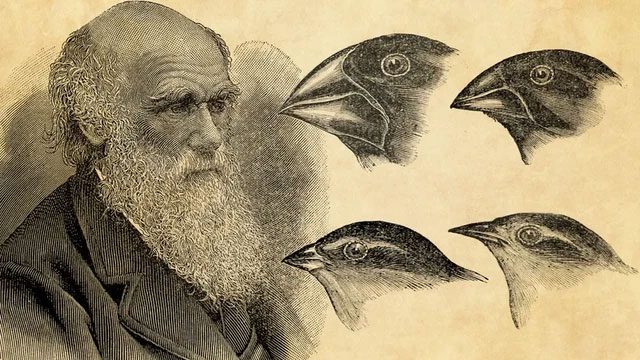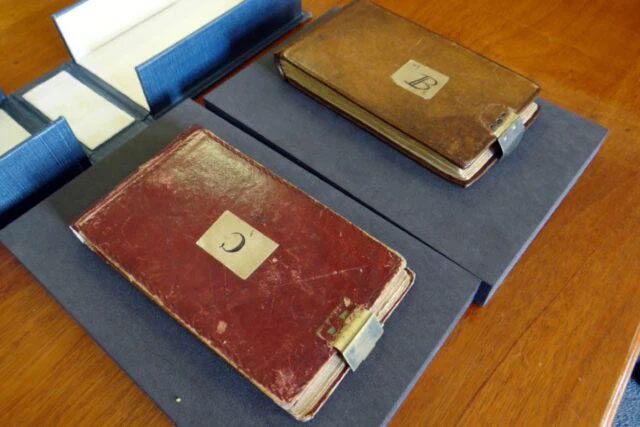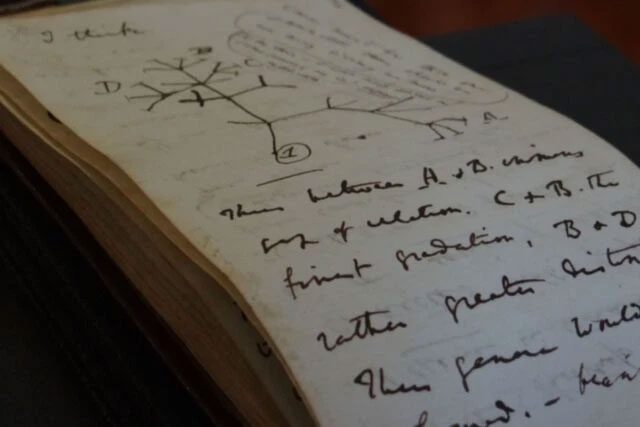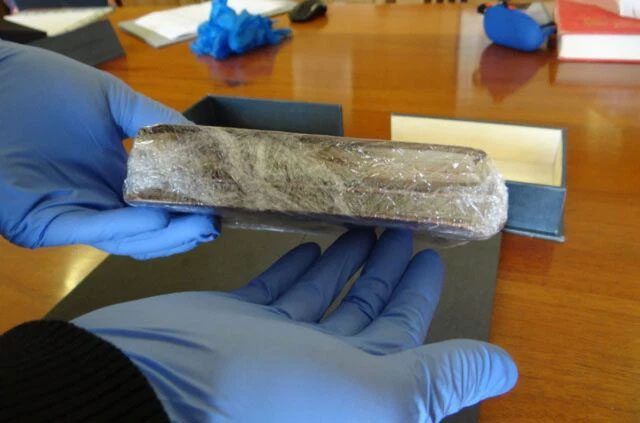Twenty years ago, two notebooks written by Charles Darwin mysteriously disappeared from the University of Cambridge Library. One of them contained Darwin’s handwritten sketches, depicting an incomplete version of the famous “Tree of Life”. After years of fruitless searching for the whereabouts of the two notebooks, they have found their way back to the library thanks to a mysterious figure.
On December 27, 1831, Charles Darwin set sail on the HMS Beagle as the naturalist aboard. The purpose of the voyage was to chart the coast of South America, and Darwin was responsible for collecting and documenting specimens encountered by the crew. Additionally, he would go ashore whenever the ship docked to study the geographical features of the local areas.

Charles Darwin.
Sir Darwin recorded all observations in a notebook he always carried with him. The voyage was originally expected to last two years, but it actually consumed five years of the distinguished naturalist’s life. Throughout the journey, Charles Darwin also sent many of his discoveries back to England, enriching the knowledge base for researchers at home.
On October 2, 1836, the Beagle concluded its voyage at Falmouth, Cornwall. After visiting family, Charles Darwin returned to Cambridge and immersed himself in the specimens brought back by the research team. By March 1837, Darwin had gathered enough important evidence to hypothesize that species changed their appearances over time, transforming into different species.

Darwin’s two notebooks.
In the summer of 1837, Darwin began to draft ideas about the life cycle of organisms and the different characteristics of each generation. He believed that his theory could decode the strange biodiversity of the famous Galapagos Islands.
It was during this time that Darwin sketched the Tree of Life in Notebook B, broadly describing a single evolutionary tree, but still concluding that “it is strange to speak of one species being higher than another.” Over 20 years later, Darwin provided a comprehensive view of his concept of the Tree of Life in his book On the Origin of Species.
At the University of Cambridge Library, Notebook B, containing the early version of the Tree of Life, was placed alongside Notebook C in a green box, hidden among countless valuable documents of humanity. Collectively, they are referred to as “The Mutation Notebooks,” valued at several million pounds.
In September 2000, the two notebooks were taken out for photography. However, by January 2001, it was discovered that the blue box containing these invaluable documents had gone missing. The initial hypothesis was that the librarian had misplaced the box, but a 20-year search yielded no results; the document storage room itself contained millions of documents, making the search increasingly difficult.
Under a new management team, a new search team conducted another review of the documents in 2020, concluding that the two invaluable notebooks might have been stolen.

Darwin’s handwriting, next to the early version of the Tree of Life.
The University of Cambridge Library decided to announce the incident to the entire community, hoping the holder would return the notebooks. They also notified the police to list the two notebooks in the PSYCHE database, used by Interpol to track stolen artworks. This action ensured that the global book exchange community would immediately report when the two notebooks surfaced; Darwin’s unique and invaluable handwriting would not be able to be exchanged or sold publicly.
Fifteen months after the announcement, a small package appeared outside the office of librarian Jessica Gardner, manager of the University of Cambridge Library. An envelope with the simple message “To the Librarian, Happy Easter” contained a blue document preservation box holding both invaluable notebooks wrapped in a thin layer of plastic.

The exterior of the mysterious envelope.

Someone took the effort to securely wrap the two invaluable notebooks.
Delighted by the return of the two notebooks, the Library decided to display them at an exhibition titled “Darwin Conservation,” which will be open to the public for free on July 9.
“I am immensely pleased that the two notebooks have safely returned home, alongside the Darwin Archive of the University Library,” said Stephen J. Toope, Vice-Chancellor of the University of Cambridge. “Items like this play a crucial role not only in the history of science but also in the history of humanity.”
Librarian Gardner assured the public that the two notebooks would be kept securely under multiple layers of protection. The library has also been upgraded during the time the “cherished children” were missing: the book storage area now has a more secure vault, a comprehensive camera surveillance system, a more reliable security system, and even a new reading room dedicated to experts.
“The security policy is also significantly different from 20 years ago,” librarian Gardner disclosed. “Today, any item that goes missing will be immediately placed on the list of potential thefts, and a wide search will begin right away.” Currently, the police are investigating the identity of the individual or organization that returned Darwin’s manuscripts to the library.




















































